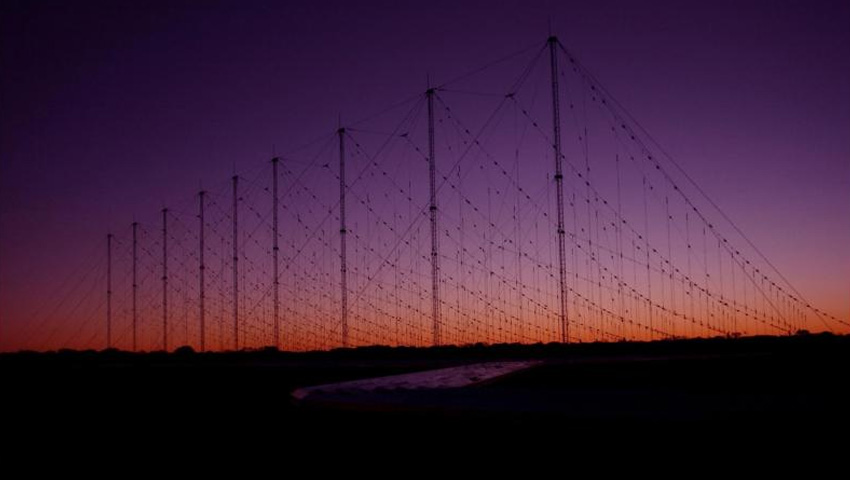Defence Minister Linda Reynolds and Minister for Defence Industry Melissa Price have announced the signing of an agreement with BAE Systems and the University of Adelaide, which aims to bolster Australia’s high-frequency radar capability.
To continue reading the rest of this article, please log in.
Create free account to get unlimited news articles and more!
Defence has signed a memorandum of understanding (MoU) with BAE Systems Australia and the University of Adelaide, in which the parties have committed to bolstering interest in the study of high-frequency radar technology.
Ultimately, the agreement aims to increase the number of specialist-trained engineers, equipped with the skills to enhance Australia’s high-frequency (HF) systems capability.
Accordingly, the parties have agreed to establish a Centre for High Frequency Technologies, to develop knowledge ad understanding of the domain in which Australia’s Jindalee Operational Radar Network (JORN) – an over the horizon high frequency radar – operates.
The MoU also involves:
- An undergraduate and post-graduate teaching program covering ionospheric physics, electromagnetism, radio frequency engineering, signal processing and automation relevant to HF systems; and
- Sponsorship and support of research in relevant disciplines through internships, undergraduate scholarships, cadetships, PhD projects and research contracts.
Minister for Defence Linda Reynolds said the agreement would harness resources, expertise and facilities of the respective parties to maintain Australia’s national security.
“This MoU formalises the JORN Open Innovation Network, which will promote innovation and cross-disciplinary research on the science and engineering of HF systems,” Minister Reynolds said.
“It is a significant step forward in growing and strengthening a highly skilled sovereign HF radar workforce and technology pipeline.”
Minister for Defence Industry Melissa Price highlighted the benefits of establishing the new Centre for High Frequency Technologies.
“The Centre will develop and commercialise new technologies that will benefit defence industry and Defence’s ability to transition innovation into capability,” Minister Price said.
“This key partnership comprises a five-year extendable program that will assist academia to provide undergraduate and post-graduate education in an area of critical importance to Defence.
“Ultimately, the program will also bolster employment opportunities in upper atmosphere physics and radio frequency engineering.”
BAE Systems chief technology officer Brad Yelland said it was “critically important” for Australia to maintains its leadership of the technologies that form part of JORN and other strategic defence assets.
“The partnership will focus on rapidly developing cutting edge technology to meet the future defence needs of the country to ensure Australia maintains superior situational awareness to keep our borders secure,” he said.
“In doing so, JORN will provide a catalyst for economic growth and will create a pipeline of talent that will be able to lead the continued evolution of critically important defence technologies well into the future.”
Professor Michael Webb, director of defence, cyber and space at the University of Adelaide, welcomed the new agreement, which he said would deepen the university’s relationship with the defence sector.
“Our partnership with Defence Science and Technology Group in ionospheric physics and radar systems research will deliver the insights necessary to enable BAE Systems and Defence to maximise the performance achievable through the JORN Phase 6 upgrade project,” Professor Webb said.
“Internships, cadetships, PhD projects and research contracts with our industry partners will provide students with real-world experience and connect them to future employers: they will learn from the best in the industry. In turn, industry will have access to a skilled workforce of the future ready to support major defence projects, including JORN.
“This collaboration is another outstanding example of industry, government and academia working together to create a pipeline of graduates and researchers with the expertise to support burgeoning industries and opportunities in South Australia.”
About JORN
JORN comprises three over-the-horizon radar (OTHR) systems, forming part of the layered surveillance network that provides coverage of Australia's northern approaches.
The network is designed to provide wide-area surveillance at ranges of 1,000 to 3,000 kilometres from the radar sites, and is used to monitor the air and sea in support of Australia's national surveillance effort.
JORN was specifically designed to detect air targets the same size as a BAE Hawk-127 aircraft or larger, as well as objects on the surface of the water at least the size of an Armidale Class patrol boat (56.8 metres long).
However, according to the Royal Australian Air Force, JORN’s radar coverage and system performance is highly variable and depends on the state of the ionosphere (a layer of the Earth's atmosphere), environmental conditions, and an object's size and construction.
JORN is also unlikely to detect small wooden vessels, given their typical size, construction and speed.
[Related: Satellite Ground Station goes live]

 Login
Login







